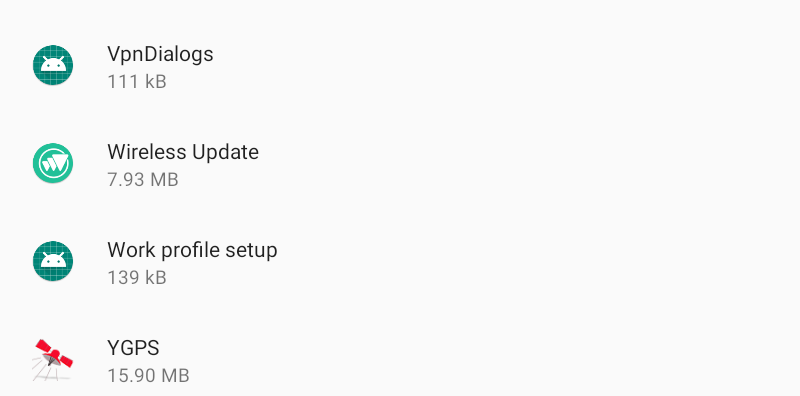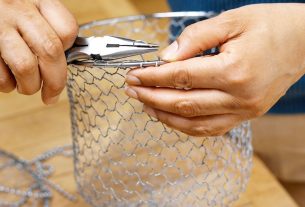|
Getting your Trinity Audio player ready...
|
It’s easy to get Android devices from online vendors like Amazon at different price points. Unfortunately, it is also easy to end up with an Android device with malware at these lower budgets. There are several factors that contribute to this: multiple devices manufactured in the same facility, lack of standards on security when choosing components, and lack of quality assurance and scrutiny by the vendors that sell these devices. We investigated a tablet that had potential malware on it bought from the online vendor Amazon; a Dragon Touch KidzPad Y88X 10 kid’s tablet. As of this post, the tablet in question is no longer listed on Amazon, although it was available for the majority of this year.
Dragon Touch KidzPad Y88X 10
It turns out malware was present, with an added bonus of pre-installed riskware and a very outdated parental control app. This is a major concern since this is a tablet marketed for kids.
Parents have plenty of worry and concern about how their kids use technology as it is. Ongoing conversations and negotiations about the time spent on devices happen in many households. Potential malware or riskware should not be a part of these concerns just because you purchased a budget Android tablet for your child. It just so happens that some of the parents at EFF conduct security research. But this is not what it should take to keep your kid safe.
“Stock Android”
To understand this issue better, it’s useful to know what “stock Android” means and how manufacturers approach choosing an OS. The Android operating system is open sourced by Google and officially known as the “Android Open Source Project” or AOSP. The source code is stripped down and doesn’t even include Google apps or the Google Play Store. Most phones or tablets you purchase with Android are AOSP with layers of customization; or a “skinned” version of AOSP. Even the current Google flagship phone, Pixel, does not come with stock Android.
Even though custom Android distributions or ROMs (Android Read Only Memory) can come with useful features, others can come with “bloatware” or unwanted apps. For example, in 2019 when Samsung pre-installed the Facebook app on their phones, the only option was to “disable” the app. Worse, in some cases custom ROMS can come with pre-installed malware. Android OEMs (original equipment manufacturers) can pre-install apps that have high-level privileges and may not be as obvious as an icon you can see on your home screen. It’s not just apps, though. New features provided with AOSP may be severely delayed with custom OEMs if the device manufacturer isn’t diligent about porting them in. This could be because of reasons like hardware limitations or not prioritizing updates.
Screen Time for Sketchyware
Similar to an Android TV we looked into earlier this year, we found the now notorious Corejava malware directories on the Dragon Touch tablet. Unlike the Android TV box we saw, this tablet didn’t come rooted. However, we could see that the directories “/data/system/Corejava” and “/data/system/Corejava/node” were present on the device. This indicates Corejava was active on this tablet’s firmware.
We originally didn’t suspect this malware’s presence until we saw links to other manufacturers and odd requests made from the tablet prompting us to take a look. We first booted up this Dragon Touch tablet in May 2023, after the Command and Control (C2) servers that Corejava depends on were taken down. So any attempts to download malicious payloads, if active, wouldn’t work (for now). With the lack of “noise” from the device, we suspect that this malware indicator is at minimum, a leftover remnant of “copied homework” from hasty production; or at worst, left for possible future activity.
The tablet also came preloaded with Adups (which were also found on the Android TV boxes) in the form of “firmware over the air” (FOTA) update software that came as the application called “Wireless Update.”

Adups has a history of being malware, but there are “clean versions” that exist. One of those “clean” versions was on this tablet. Thanks to its history and extensive system level permissions to download whatever application it wants from the Adups servers, it still poses a concern. Adups comes preinstalled with this Dragon Touch OEM, if you factory reset this device, the app will return. There’s no way to uninstall or disable this variant of Adups without technical knowledge and being comfortable with the command line. Using an OTA software with such a fraught history is a very questionable decision for a children’s tablet.
Connecting the Dots
The connection between the infected Dragon Touch and the Android TV box we previously investigated was closer than we initially thought. After seeing a customer review for an Android TV box for a company at the same U.S. address as Dragon Touch, we discovered Dragon Touch is owned and trademarked by one company that also owns and distributes other products under different brand names.
This group that registered multiple brands, and shared an address with Dragon Touch, sold the same tablet we looked at in other online markets, like Walmart. This same entity apparently once sold the T95Z model of Android TV boxes under the brand name “Tablet Express,” along with devices like the Dragon Touch tablet. The T95Z was in the family of TV boxes investigated after researchers started taking a closer look at these types of devices.
With the widespread use of these devices, it’s safe to say that any Android devices attached to these sellers should be met with scrutiny.
Privacy Issues
The Dragon Touch tablet also came with a very outdated version of the KIDOZ app pre-installed. This app touts being “COPPA Certified” and “turns phones & tablets into kids friendly devices for playing and learning with the best kids’ apps, videos and online content.” This version operates as kind of like a mini operating system where you can download games, apps, and configure parental controls within the app.
We noticed the referrer for this app was “ANDROID_V4_TABLET_EXPRESS_PRO_GO.” “Tablet Express” is no longer an operational company, so it appears Dragon Touch repurposed an older version of the KIDOZ app. KIDOZ only distributes its app to device manufacturers to preload on devices for kids, it’s not in the Google Play Store.
This version of the app still collects and sends data to “kidoz.net” on usage and physical attributes of the device. This includes information like device model, brand, country, timezone, screen size, view events, click events, logtime of events, and a unique “KID ID.” In an email, KIDOZ told us that the “calls remain unused even though they are 100% certified (COPPA)” in reference to the information sent to their servers from the app. The older version still has an app store of very outdated apps as well. For example, we found a drawing app, “Kids Paint FREE”, attempting to send exact GPS coordinates to an ad server. The ad server this app calls no longer exists, but some of these apps in the KIDOZ store are still operational despite having deprecated code. This leakage of device specific information over primarily HTTP (insecure) web requests can be targeted by bad actors who want to siphon information either on device or by obtaining these defunct domains.
Several security vendors have labeled the version of the KIDOZ app we reviewed as adware. The current version of KIDOZ is less of an issue since the internal app store was removed, so it’s no longer labeled as adware. Thankfully, you can uninstall this version of KIDOZ. KIDOZ does offer the latest version of their app to OEM manufacturers, so ultimately the responsibility lies with Dragon Touch. When we reached out to KIDOZ, they said they would follow up with various OEMs to offer the latest version of the app.

Simple racing games from the old KIDOZ app store asking for location and contacts.
Malware and riskware come in many different forms. The burden of remedy for pre-installed malware and sketchyware falling to consumers is absolutely unacceptable. We’d like to see some basic improvements for how these devices marketed for children are sold and made:
- There should be better security benchmarks for devices sold in large online markets. Especially devices packaged to appear safe for kids.
- If security researchers find malware on a device, there should be a more effective path to remove these devices from the market and alert customers.
- There should be a minimum standard set on Android OEMs sold to offer a minimum requirement of available security and privacy features from AOSP. For instance, this Dragon Touch kid’s tablet is running Android 9, which is now five years old. Android 14 is currently the latest stable OS at the time of this report.
Devices with software with a malicious history and out-of-date apps that leak children’s data create a larger scope of privacy and security problems that should be watched with closer scrutiny than they are now. It took over 25 hours to assess all the issues with this one tablet. Since this was a custom Android OEM, the only possible source of documentation was from the company, and there wasn’t much. We were left to look at the breadcrumbs they leave on the image instead, such as custom system level apps, chip processor specific quirks, and pre-installed applications. In this case, following the breadcrumbs allowed us to make the needed connections to how this device was made and the circumstances that lead to the sketchyware on it. Most parents aren’t security researchers and do not have the time, will, or energy to think about these types of problems, let alone fix them. Online vendors like Amazon and Walmart should start proactively catching these issues and invest in better quality and source checks on the many consumer electronics on their markets.
Investigated Apps, Logs, and Tools List:
APKs (Apps):
Logs:
Tools:
- Android Debug Bridge (adb) and Android Studio for shell and emulation.
- Logcat for app activity on device.
- MOBSF for initial APK scans.
- JADX GUI for static analysis of APKs.
- PiHole for DNS requests from devices.
- VirusTotal for graphing connections to suspicious domains and APKs.
EFF Director of Investigations Dave Maass contributed research to this report.



